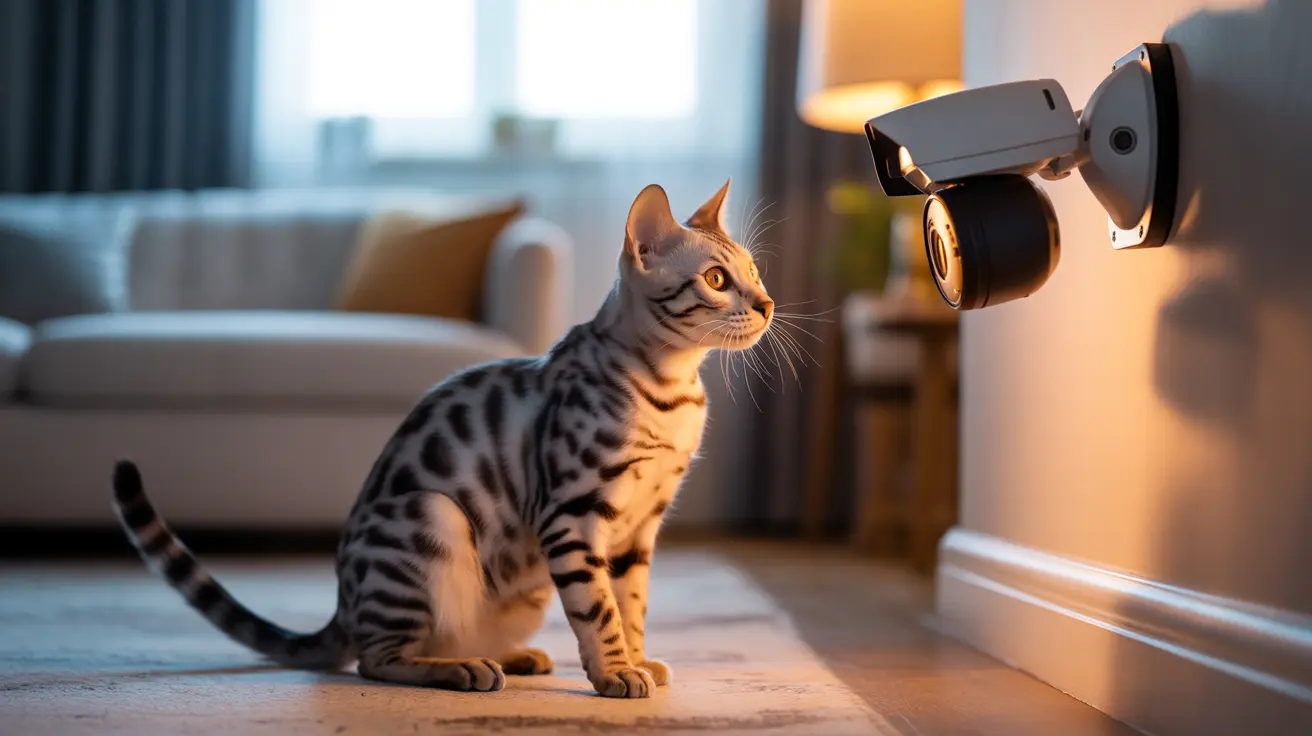Understanding Cat Vision and Light Perception
Cats have evolved specialized visual adaptations that make them exceptional hunters and navigators in low-light conditions. Their eyes contain a reflective layer called the tapetum lucidum, which enhances their night vision capabilities by reflecting light back through their retinas, effectively giving them a second chance to capture available light.
While cats can see in light levels six to eight times dimmer than humans can manage, this doesn't necessarily translate to infrared vision. Their visual spectrum does extend beyond human capabilities, but in a different direction - toward ultraviolet light rather than infrared.
The Truth About Cats and Infrared Light
Scientific evidence conclusively shows that cats cannot see infrared light. Like humans, cats' retinas contain photoreceptors (rods and cones) that are specifically tuned to visible and ultraviolet wavelengths, not infrared. Being warm-blooded mammals, if cats could see infrared radiation, their vision would be constantly overwhelmed by their own body heat.
However, cats do possess other remarkable sensory abilities that might explain why some people believe they can see infrared:
- Superior motion detection
- Enhanced light sensitivity
- Excellent heat detection through specialized nerve endings
- Broader field of view compared to humans
Heat Detection vs. Infrared Vision
While cats can't see infrared light, they are highly sensitive to temperature changes in their environment. Their whiskers and facial nerve endings can detect subtle variations in heat, allowing them to:
- Locate warm spots for comfort
- Detect recent presence of other animals
- Find sun-warmed surfaces
- Navigate in complete darkness using thermal cues
Why Cats React to Infrared Devices
Some cat owners notice their pets responding to infrared security cameras or motion sensors. This reaction isn't due to seeing infrared light but rather:
- Hearing the subtle electronic sounds these devices emit
- Detecting visible light leakage from IR LEDs
- Sensing mechanical movements or vibrations
- Responding to heat signatures from electronic components
Frequently Asked Questions
Can cats actually see infrared light or just feel its heat?
Cats cannot see infrared light. They can only detect heat through specialized nerve endings in their skin and whiskers, not through their eyes.
Why do cats sometimes react to infrared wildlife cameras if they can't see infrared?
Cats may react to infrared cameras due to subtle sounds from the electronics, visible light leakage, or their ability to detect the heat generated by the device's components.
How does a cat's night vision compare to human vision in terms of visible and invisible light?
Cats can see in light conditions six to eight times dimmer than humans can manage, thanks to their tapetum lucidum and higher concentration of rod cells. However, their color vision is less sophisticated than humans'.
Can the ultraviolet vision of cats explain their ability to see things invisible to humans?
Yes, cats can see ultraviolet light, which allows them to detect things invisible to humans, such as urine trails and certain patterns on flowers or objects. This is different from infrared vision.
Do cats have any special adaptations for detecting warmth or heat besides their eyesight?
Yes, cats have specialized nerve endings in their faces, particularly around their whiskers and nose, that allow them to detect subtle temperature changes in their environment.
Understanding your cat's true visual capabilities helps explain their remarkable behaviors while dispelling common myths about infrared vision. While they can't see infrared light, their combination of enhanced night vision, ultraviolet sensitivity, and sophisticated heat detection makes them incredibly adept at navigating their environment in ways that continue to amaze their human companions.






